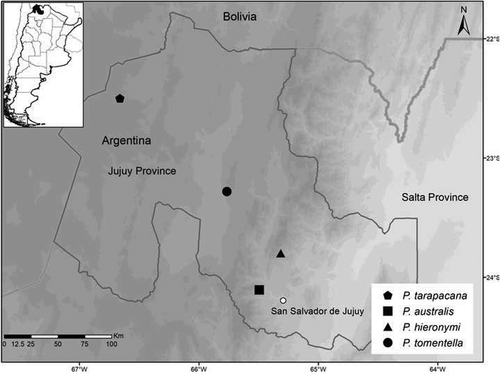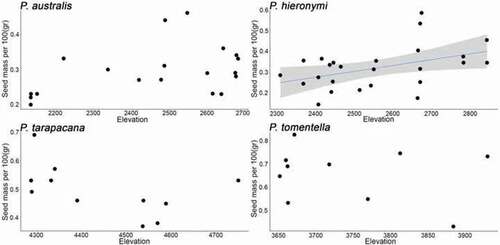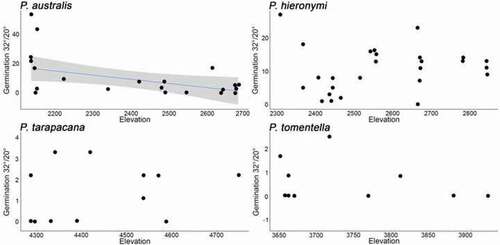Figures & data
Table 1. The number of trees sampled per gradient, number of forest fragments, elevational range, and mean number of seeds collected per tree
Figure 1. Map of study area. Scale of grey indicates relief. Black geometric figures indicate study sites for different species. Lines indicate country or province administrative divisions

Table 2. Species, means ± standard deviation and range (lowest and highest tree values in parenthesis) of mass per 100 seeds (g), viability (%), and germination (%) at 20°C/10°C (day/night) and 32°C/20°C (day/night) of four Polylepis species in northwest Argentina. Different letters within a column indicate significant differences in Post-hoc tests and results from Analysis of Variance (ANOVA) are indicated
Table 3. Results of GLM of four Polylepis species in northwest Argentina for seed viability, germination percentage at 20°C/10°C (day/night) and 32°C/20°C (day/night). Significance level: “**” < 0.01, “*”< 0.05
Figure 2. Seed mass (for 100 seeds) for P. australis, P. hieronymi, P. tarapacana and P. tomentella from different elevations. The blue line indicates a significant trend and grey shading the estimated 95% confidence interval



